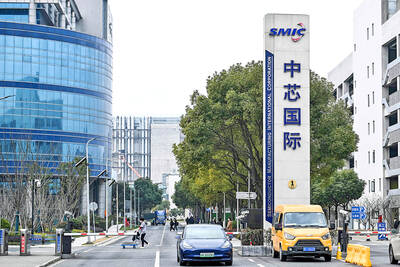Commodity markets enjoyed mixed fortunes this week as positive US economic data was offset by the impact of the strengthening US dollar amid the burgeoning eurozone debt crisis.
Official data on Wednesday showed improvements in unemployment, consumer spending and wages in the US, which is a major consumer of raw materials.
Markets remain under pressure, however, amid stubborn fears over the impact of the eurozone crisis and simmering tensions on the Korean Peninsula.
OIL: The market recovered on positive economic data in the US and China, the world’s two biggest commodities consumers, but gains were capped by the stronger dollar.
Prices rose “after stronger than expected US economic data brought risk appetite back to the market,” Sucden Financial analyst Myrto Sokou said. “It seems that the persistent concerns about a contagious debt crisis in the eurozone have been overshadowed by stronger-than-expected macroeconomic figures from the US and China.”
By late Friday on London’s Intercontinental Exchange, Brent North Sea crude for delivery in January rose to US$85.41 a barrel, compared with US$84.11 a week earlier.
On the New York Mercantile Exchange, Texas light sweet crude for January stood at US$83.46 compared with US$81.20 for the expired December contract.
BASE METALS: Prices mostly retreated, with copper and tin falling further from their recent record highs, as traders eyed the dollar.
“On balance, the metals remain in consolidation mode,” analyst William Adams at specialist Web site BaseMetals.com said.
By late Friday on the London Metal Exchange, copper for delivery in three months dropped to US$8,220 a tonne from US$8,385 a week earlier.
Three-month tin fell to US$24,150 a tonne from US$25,200 a week earlier.
PRECIOUS METALS: Gold moved higher, spiking in line with Korean tensions at the start of the week, but held far below their recent record peak of US$1,424.60 an ounce.
By late Friday on the London Bullion Market, gold rose to US$1,355 an ounce at the late fixing from US$1,342.50 a week earlier.
Silver edged down to US$26.62 an ounce from US$27.07.
COCOA: Prices fell ahead of a long-awaited presidential elections in Ivory Coast, which is the world’s biggest cocoa producer.
By Friday on the New York Board of Trade (NYBOT), cocoa for delivery in March sank to US$2,795 a tonne from US$2,929 a week earlier.
On LIFFE, London’s futures exchange, cocoa for December weakened to £1,876 a tonne from £1,925.
SUGAR: The market held steady after enjoying recent multi-year highs.
By Friday on the NYBOT, the price of unrefined sugar for delivery in March eased to US$0.2809 a pound from US$0.2813 a week earlier.

NO BREAKTHROUGH? More substantial ‘deliverables,’ such as tariff reductions, would likely be saved for a meeting between Trump and Xi later this year, a trade expert said China launched two probes targeting the US semiconductor sector on Saturday ahead of talks between the two nations in Spain this week on trade, national security and the ownership of social media platform TikTok. China’s Ministry of Commerce announced an anti-dumping investigation into certain analog integrated circuits (ICs) imported from the US. The investigation is to target some commodity interface ICs and gate driver ICs, which are commonly made by US companies such as Texas Instruments Inc and ON Semiconductor Corp. The ministry also announced an anti-discrimination probe into US measures against China’s chip sector. US measures such as export curbs and tariffs

The US on Friday penalized two Chinese firms that acquired US chipmaking equipment for China’s top chipmaker, Semiconductor Manufacturing International Corp (SMIC, 中芯國際), including them among 32 entities that were added to the US Department of Commerce’s restricted trade list, a US government posting showed. Twenty-three of the 32 are in China. GMC Semiconductor Technology (Wuxi) Co (吉姆西半導體科技) and Jicun Semiconductor Technology (Shanghai) Co (吉存半導體科技) were placed on the list, formally known as the Entity List, for acquiring equipment for SMIC Northern Integrated Circuit Manufacturing (Beijing) Corp (中芯北方積體電路) and Semiconductor Manufacturing International (Beijing) Corp (中芯北京), the US Federal Register posting said. The

India’s ban of online money-based games could drive addicts to unregulated apps and offshore platforms that pose new financial and social risks, fantasy-sports gaming experts say. Indian Prime Minister Narendra Modi’s government banned real-money online games late last month, citing financial losses and addiction, leading to a shutdown of many apps offering paid fantasy cricket, rummy and poker games. “Many will move to offshore platforms, because of the addictive nature — they will find alternate means to get that dopamine hit,” said Viren Hemrajani, a Mumbai-based fantasy cricket analyst. “It [also] leads to fraud and scams, because everything is now

MORTGAGE WORRIES: About 34% of respondents to a survey said they would approach multiple lenders to pay for a home, while 29.2% said they would ask family for help New housing projects in Taiwan’s six special municipalities, as well as Hsinchu city and county, are projected to total NT$710.65 billion (US$23.61 billion) in the upcoming fall sales season, a record 30 percent decrease from a year earlier, as tighter mortgage rules prompt developers to pull back, property listing platform 591.com (591新建案) said yesterday. The number of projects has also fallen to 312, a more than 20 percent decrease year-on-year, underscoring weakening sentiment and momentum amid lingering policy and financing headwinds. New Taipei City and Taoyuan bucked the downturn in project value, while Taipei, Hsinchu city and county, Taichung, Tainan and Kaohsiung